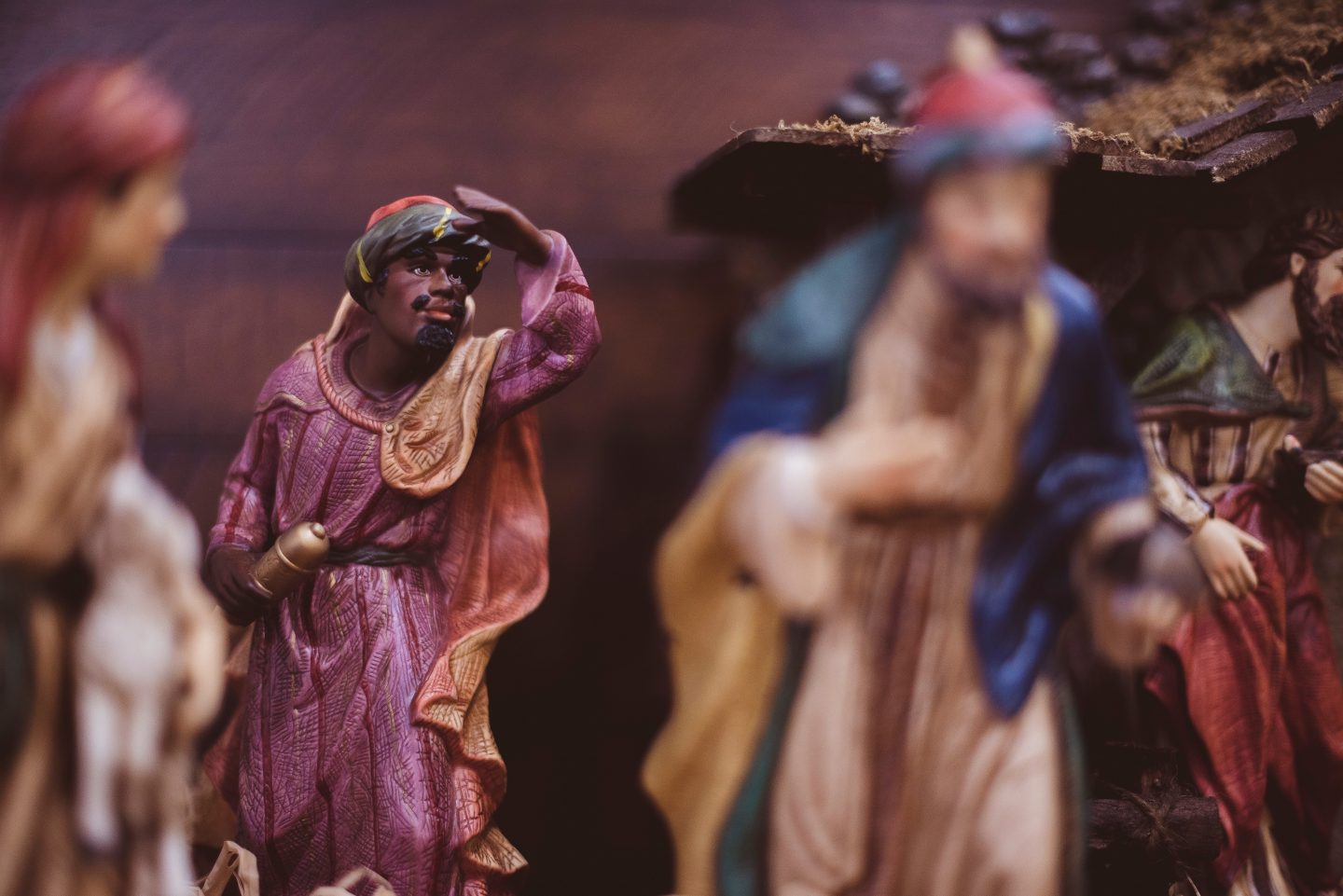The Magi and the leading of the star: Astrology in the Gospel of Matthew
Rev Dr Babu Immanuel Venkataraman // December 24, 2019, 11:48 pm

Gospel-writer Matthew intentionally included the presence of the magi and made reference to astrology – a practice which God had prohibited the Jews from. By doing so, Matthew shows that the Gospel expands to a universal perspective that salvation is available to both Jews and Gentiles. Photo by Ben White on Unsplash.
In this Christmas season, images of the nativity scene become a common sight in public areas and churches: Infant Jesus sleeping peacefully in a manger while being adored by His parents (Mary and Joseph), shepherds, several farm animals and three magi.
Of the four Gospels, only two of them (Matthew and Luke) document the story of Jesus’ birth. Moreover, only Matthew documents the visit of the magi who “saw his star when it rose and have come to worship him” (Matthew 2:2).
Why did Matthew believe it important to include the thoughts and actions of these men engaged in the practice of astrology?
Astrology as practised in the ancient Near East
Let us first set astrology in its ancient context so that we are able to understand the world to which it belonged.
Matthew presents the story of the magi as the first instance that anticipates the universality of the Gospel of Jesus.
Astrology is the art of foretelling events by the positions and movements of the aster (stars). It is traced back to the ancient Persian or Babylonian magoi (magicians) who were considered experts in reading the positions and movement of the stars, divination and sorcery.
The magos (astrologers or astrologos) established relations between humans and the heavenly bodies, believed to be personified divine beings, in order to predict how the stars and planetary movements predetermined human life on earth (in general) and human destiny (in particular).
The origins of astrology
Scholars who have extensively studied ancient astrology agree that astrology originated as early as in 3,000 BCE in the Mesopotamian world, particularly in Babylonia, where it flourished as a science and art of its own kind. The Babylonian priests observed the solstices and equinoxes and charted the motions and cycles of the planets almost accurately.
In Chaldean astrology, a certain constellation with an unusually bright star every 300 years signalled the birth of an heir.
One of the aspects of astrology is what was known as horoscopic astrology, according to which the appearance of any unusual phenomenon in the sky was an omen of important events to come. For example, the births of illustrious men were heralded by the appearance of signs and wonders in the heavens.
The story of the magi in Matthew’s Gospel seemingly belongs in this worldview.
In Chaldean (or Babylonian) astrology, the constellation of Cassiopeia brought forth an unusually bright star every 300 years. This constellation, according to Christopher McIntosh, was known as The Woman with Child in The Astrologers and Their Creed.
He elaborates: “To an astrologos, the appearance of this star would mean that the Queen of Palestine had brought forth an heir to the throne. If this were the case, it would be most appropriate to go and pay homage to the future king. It was this star which was believed to have appeared just after the birth of Jesus and must, therefore, have been the one which Matthew’s magi observed and followed.”
Biblical prohibition
For the Jewish people, the Old Testament strictly bans every aspect of astrology. Deuteronomy18:10-14 summarily outlaws several practices that were, in some ways, constituent of ancient astrology.
The gods of the ancient Near East were believed to bestow blessing and inflict curses as their mood dictates.
Notice also the following references that prohibit the use of these practices, even going as far as to pronounce death sentence on its practitioners:
- Sorcerers are not allowed to live. (Exodus 22:18)
- Making and worshipping any image of “anything which is in heaven above”, ie stars, are strictly forbidden. (Deuteronomy 5:8, Exodus 20:4)
- Practising divination and seeking omens are forbidden. (Leviticus 19:26)
- Mediums and spiritists defile the land. (Leviticus 19:31)
- A medium or a spiritist must be stoned to death. (Leviticus 20:27)
- The Lord will cut off from the land those that worship the host of heaven. (Zephaniah 1:4-5)
In the New Testament, the book of Acts records four instances (Acts 8:9, 13:6, 16:16 and Acts 19:18-19) where the Christian missionaries confronted magos outside of Palestine.
Matthew lived with two conflicting thought-worlds: That of the ancient Near East; and the one dictated in Hebrew Scripture.
The foremost reason why the Bible strictly forbids astrology, and every other related practice, is its monotheistic principle that there is only one God, Yahweh, who alone possesses the ultimate authority both to censure and censor all such practices.
Yahweh established a covenant with His people. For instance, God told them that He would take them as His own that they might know Him as their God who had brought them out from under the yoke of the Egyptians (Exodus 6:7). He would walk among them and be their God and that they would he His people (Leviticus 26:12; Jeremiah 30:22; Hosea 2:23).
The gods of the ancient Near East were notoriously capricious, believed to bestow blessing and inflict curses as their mood dictates.
However, Yahweh is not capricious; He remains faithful and does not waver in His covenant and promises. His throne is above the stars (Job 22:12).
Matthew’s universalism as the purpose of his Gospel
We now return to Matthew’s Gospel. Matthew was a man who lived with two conflicting thought-worlds: That of the ancient Near East; and the one dictated in the Hebrew Scriptures. While the former accepts astrology, the latter prohibits it. Moreover, based on the brief overview above, it is established that Christians cannot commend astrology in any form.
Although Jesus was born as a Jew, His work is universal. The Gospel of Jesus, the Messiah, is the heritage of all humanity.
Matthew would certainly have felt the tension between these thought-worlds but still chose to include the visit of the magi in his account Jesus’ birth. There must have been a purpose for doing so. We must, therefore, set the magi against the overall purpose of Matthew’s Gospel.
By including the presence of the magi, the scope of Matthew’s account expands to a universal perspective that salvation is available to both Jews and Gentiles. Although Jesus was born as a Jew, His work is universal. The Gospel of Jesus, the Messiah, is the heritage of all humanity. The following portions of Matthew’s account lend credence to this position:
- In Jesus’ genealogy, Matthew refers to at least four Gentiles who were the ancestors of Jesus: Abraham, a Chaldean when God called him from Ur; Rahab, a Canaanite; Ruth, a Moabite; and Bathsheba, a Hittite (Matthew 1:1, 5-6).
- The meaning of the name Jesus (“Jehovah is salvation”), that He will save people from their sins (Matthew 1:21), implies that sin is part of the human condition. Salvation, therefore, is a human need and is possible only through Jesus. In Luke’s Gospel, Jesus commissioned His disciples to proclaim repentance for the forgiveness of sins to all nations (Luke 24:47).
- The magi came from the east to Jerusalem. In Matthew 28:19, Jesus commissions His disciples to go into all the nations to make disciples of all nations. This anticipates that there will be, in future, a pilgrimage of all nations that the prophet Zephaniah had anticipated (Zephaniah 3:9-10) to worship Jesus, the King. The visit of the magi was the first instance of such a pilgrimage from all nations to worship the true King.
A unique experience
The visit of the magi is a unique experience in that no other New Testament book documents a parallel episode. It is unique also in that their observation of the stars led the magi to Bethlehem to pay homage and prostrate before Jesus, who, according to their reading and the leading of the star, was the king of the Jews.
The account of Jesus’ birth reveals the full extent of God’s love for the love-starved world.
Today, God leads us through the Scriptures.
From Genesis to Revelation, they reveal God’s character and plan for humanity. Therefore, we no longer need to depend on astrology (as a religious belief and practice), for humanity now has full access to Him through His written Word.
The account of Jesus’ birth reveals the full extent of God’s love for the love-starved world, fulfilling His promise to provide humanity with a Saviour.
The magi, men who travelled thousands of miles to worship a king, did so based on their reading of the stars. Though the account does not specify the type of the king the magi sought (ie an earthly or a heavenly ruler), it shows that God reaches out to earnest inquirers by revealing Himself in a way that is meaningful and intelligent to the person.
Matthew presents the story of the magi as the first instance that anticipates the universal dissemination of the Gospel of Jesus.
For believers today, our role in spreading the Good News is to embody the love and grace of God, and become visual texts that invite those around us to embark on their own journey to seek the God we worship and serve.
This article was first published in Issue 04/2016 of the Trinitarian. © Trinity Christian Centre. Reprinted with permission. Read more articles in the Trinitarian here.
We are an independent, non-profit organisation that relies on the generosity of our readers, such as yourself, to continue serving the kingdom. Every dollar donated goes directly back into our editorial coverage.
Would you consider partnering with us in our kingdom work by supporting us financially, either as a one-off donation, or a recurring pledge?
Support Salt&Light




